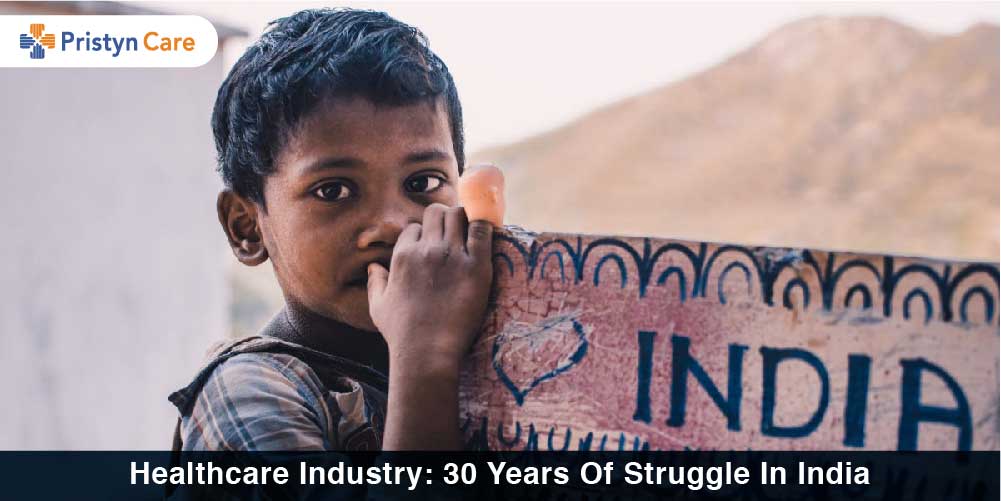
The evolution of healthcare in India over the past 30 years has been full of highs and lows. Healthcare is an important aspect of a country. And the slogan “health is wealth” defines it aptly. If a country’s healthcare backbone is strong, then the whole nation will grow and slammed healthcare implies less growth for the nation. In this article, you will get to know about the changes in the healthcare industry in India. How it was? How is it? And how it will be? To make you understand it better, we will break it decade by decade starting from the 1990s to 2020s.
The graph given below will tell you the choice of hospitals people made among public or private in rural and urban areas:

As you can see from the above graph, during the 1990s-2000s, people in rural India used to prefer private hospitals over public hospitals. In urban India, again private hospitals were preferred over public hospitals. So, let’s begin with the classic ’90s.
Table of Contents
Healthcare Industry in the 1990s-2000s
Healthcare in this decade had different problems. The healthcare industry was evolving as well as there was a lack of amplitude of healthcare systems in India.
“The doctor to patient ratio was at an all-time low during this period. For every 10,000 patients, there were only 3 doctors available.”
There were no high-standard private hospitals during this decade. Therefore, people only relied on government hospitals for treatment. Around 43% of Indians used public hospitals during the 1990s-2000s, which is a big number considering the population. Furthermore, there was no other option for them. Even though there were some good private hospitals, unfortunately, the treatment was pretty expensive. Taking a city wise scenario into account, the case in rural India was inferior.
We are highlighting an interesting fact that will definitely blow your mind:
“Only 7% of healthcare providers in rural Madhya Pradesh had a medical degree”
Now, let’s look at the evidence of growth in the healthcare industry in the next decade.
Healthcare Industry in the 2000s-2010s
Coming to a new decade, Indians made exponential growth in the healthcare sector. In these 10 years, the country witnessed immense growth. However, was not enough to say that Indian Healthcare is growing on a global scale.
“In 2011, six out of every 10 hospitals in less developed states did not provide intensive care and they struggled with common issues such as sanitation and quality treatment.”
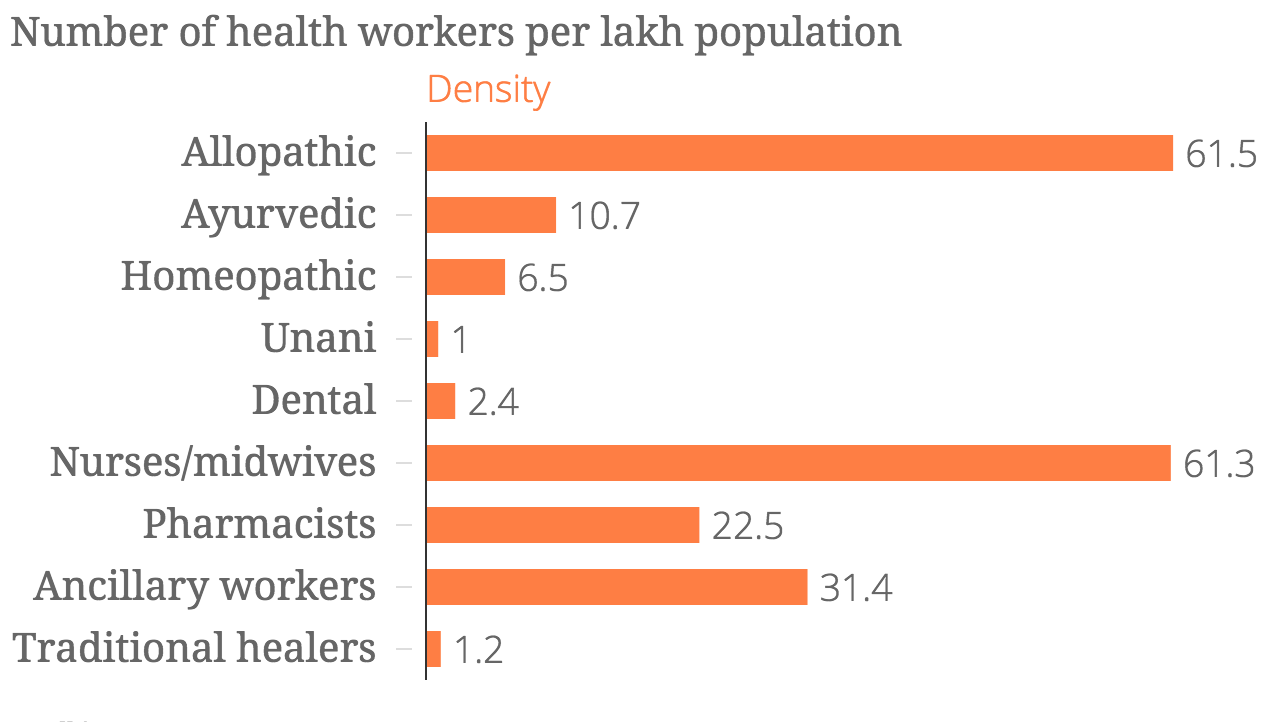
According to the World Health Organization, there should be at least one doctor for every 1000 people, that means at least 1000 doctors for every one lakh of population. With the ever-increasing population from the 1990s-2000s, there is a dearth of doctors.
“To meet global healthcare standards, the number of ratio of nurses to doctors should be at least 2:1.”
Let’s have a look at another bar graph that depicts the comparison between India and other countries per healthcare facilities and services that were non-existent.
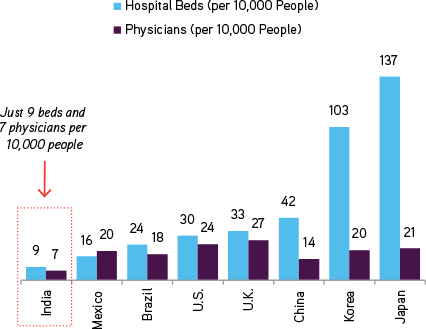
As you can see clearly that there were just 9 hospital beds and 7 doctors per 10,000 people. India was way behind Brazil and China in comparison to hospital beds and doctors ratio. However, there was interesting evidence of growth regarding life expectancy.
“India’s average life expectancy has risen steadily from 64 to 68 years ”
In addition, the overall growth in the healthcare sector was nowhere near the global standards in this decade. But, don’t let it dishearten you. You are in for a surprise now. We will share all about the growth in the next decade, i.e. 2010 to 2020.
Healthcare Industry in the 2010s-2020s
There has been a positive growth since 2010 in Indian healthcare. There has been a downtrend in communicable diseases.
“India has been polio-free since 2014, in a country of 1.2 billion people, this is a big deal.”
The Swachh Bharat Abhiyan has pushed the country in the right direction to reduce the spread of communicable diseases. The Indian government also launched Mission Indradhanush in 2014 which strengthened immunization coverage in India to all children who are not vaccinated. Earlier, in the 1990s and 2000s, no government has taken such steps. When the government was present with slammed healthcare facilities in India, the team conceptualized Mission Indradhanush which was launched in 2014 and will achieve the target of full coverage by 2020.
Let’s look at the final tally and global standards. Now, Chennai is designated as the healthcare capital of India. People from all over the world are flying to Chennai for excellent and comparatively cheaper treatments. Moreover, the constant fight in healthcare is motivating doctors to start their own hospitals. New and more advanced treatments are available in India. You can visit the website here to know about the most advanced healthcare service provider in India. Lastly, you can look at the data here. I am sure this will come to you as a surprise.
“There were approx 35,000 hospitals in India in 2013. This includes both government and private hospitals. There will be 100,500 hospitals by 2035.”
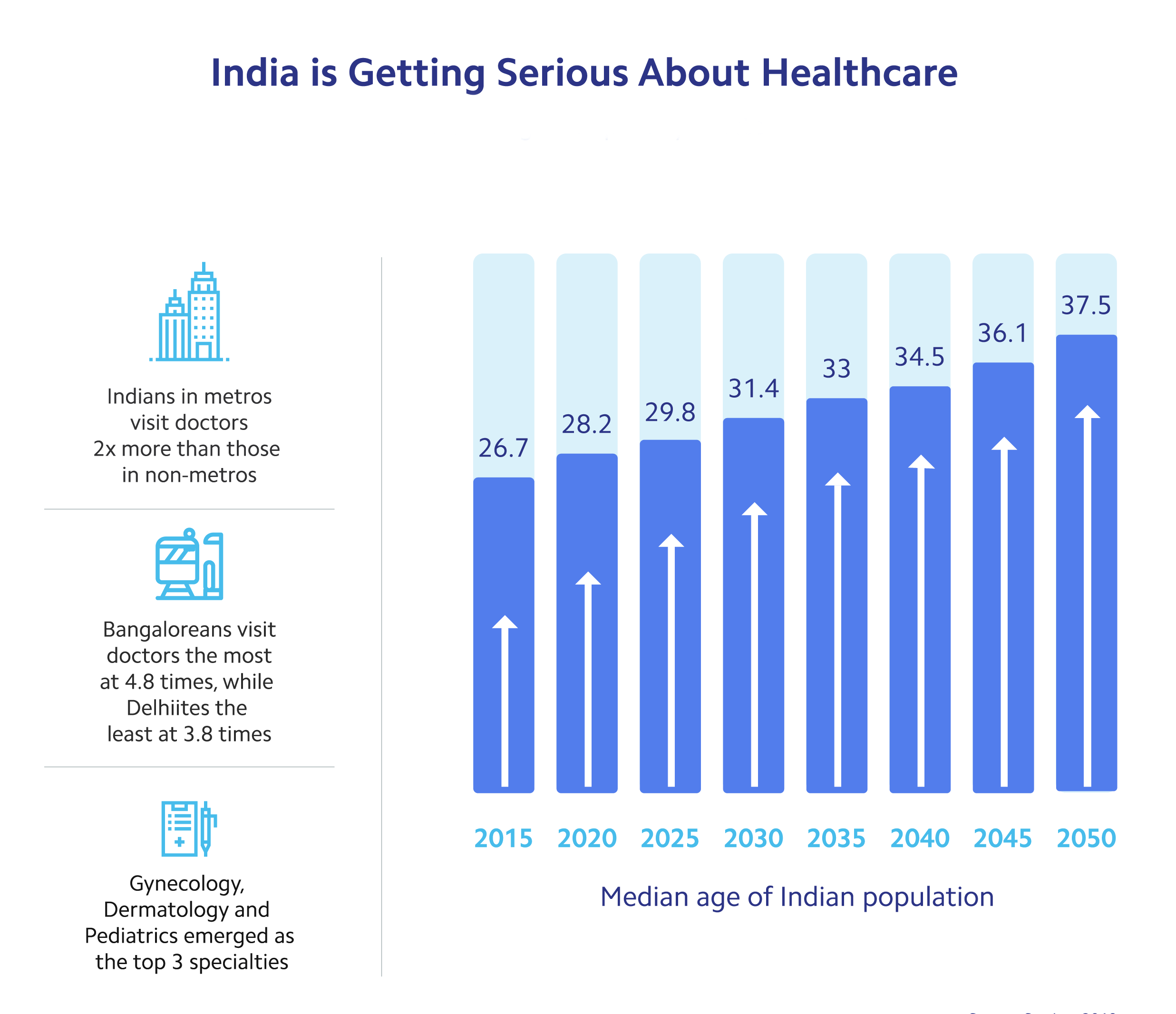
The report above reflects the rise in the adoption of digital healthcare in India. Over 60% of the population below the age of 35, with a median age of 29 is using technology to actively get in touch with doctors. As you can see from the above graph, by 2050, the number will increase to 37.5.
“Indians in metros visit doctors 2x more than those in non-metros.”
In 2018, the average Indian visited a doctor 3.2 times vs 2.6 times in 2017. So, you can see the tremendous growth in the healthcare sector in the last 5 years in comparison to the last 20 years. The Indian healthcare industry today is going head-to-head with other developed countries.
This is an age of startups, new innovations and India is trying to match the technology of the western world. Most startups in India are focussed on improving the healthcare system and services. This is the biggest need at the moment.
“As of 2018, there a total of 4,900 startups in the Indian health-tech space. Overall, the health-tech startups in India have raised a total of $500 million between 2014-2018.”
Also Read: Future Of Healthcare In India
How startups are bringing a new phase of Healthcare 2.0!!
Startups are improving healthcare systems day-by-day. There are startups who have served around patients in 800 towns without a physical center. They are benefiting from the already existent modernization wave of Digital India.
“There are many doctors who don’t want to practice in rural areas. But smartphones have already reached every part of our country”
There are around 8000 cardiologists, 30000 gynecologists in India. How are we going to train lakhs more in the next 5 years? This can be possible with the help of technology and startups. With the help of an AI-based system, one startup is able to assist radiologists with assessing X-rays, generating reports and scans. Today the startups can identify the top 18 conditions, which also cover a broad range of conditions from chest X-rays and CT scans.
Also Read: Know How Pristyn Care is Transforming Future of Healthcare
Fighting TB with the smartphone
Another startup taking the help of an AI system on a smartphone. Their tool helps with TB diagnosis with the help of a screening test, which involves recording and analyzing cough with the help of the phone’s microphone, which takes around three minutes.
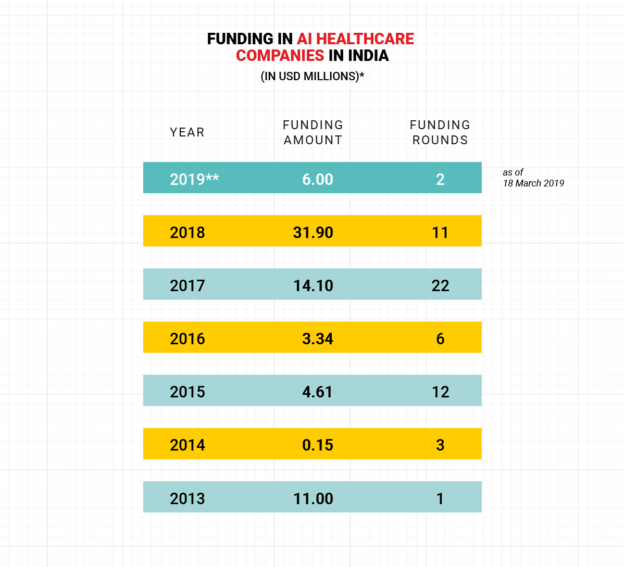
“AI is an ideal middle layer which will bridge the demand-supply gap between doctors and patients.”
Medicine is complicated and it keeps on changing. AI won’t be able to replace doctors in the near future but it can make the process seamless.
Conclusion
In the era of digitalization, the healthcare sector is growing and has all the potential to grow at an exponential rate. Booking an appointment was never so easy as it’s nowadays. You can even get medicines delivered at your home with a click of a button. By 2030, with growing technology, the healthcare industry is in for a treat. Artificial Intelligence, upcoming healthcare government schemes, literacy rate, internet user, insurance and venture capital keen eye to have an early slice of cake can be a game-changer for the healthcare industry. India as a nation will grow in healthcare facilitation globally.







